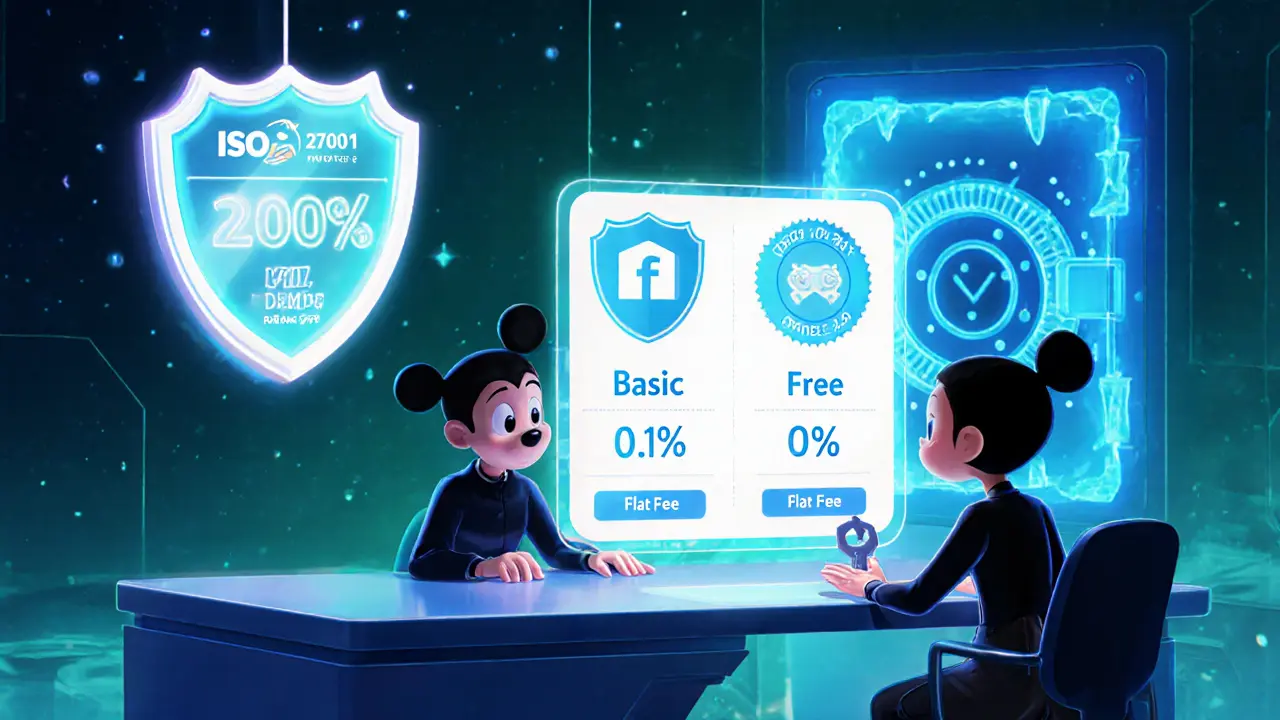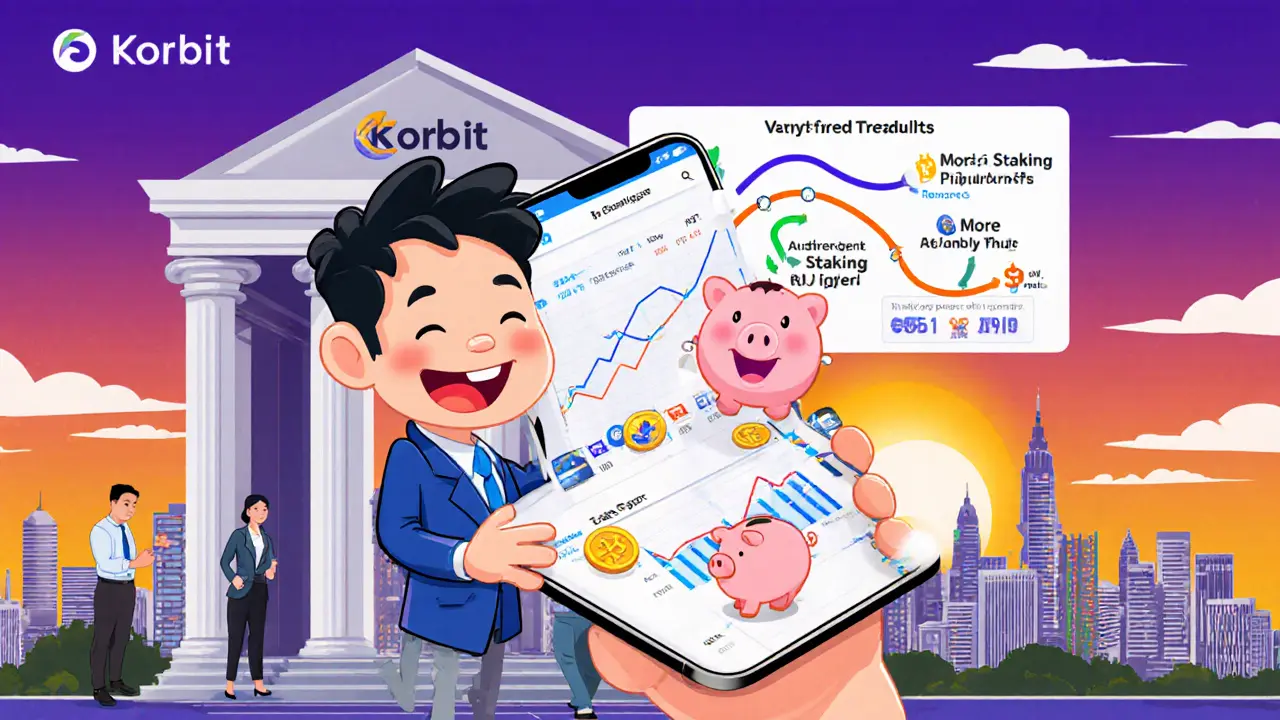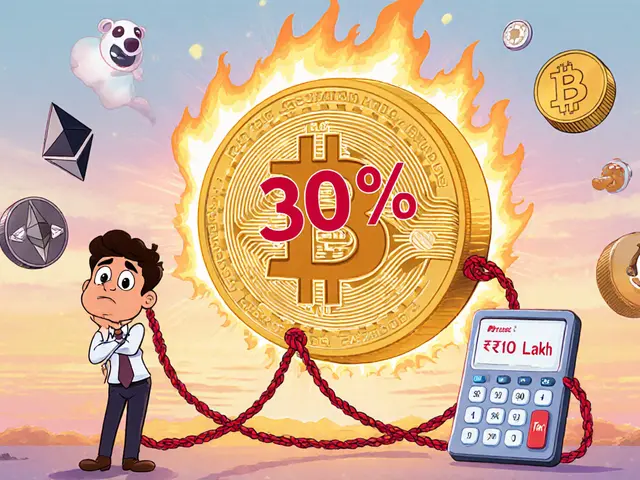Korbit Fee Calculator
Fee Calculation
Estimate your trading costs on Korbit based on your trade volume and selected fee plan.
Estimated Fees
Enter your trade volume and select a plan to see estimated fees.
Korbit Fee Comparison (2025)
| Plan | Maker Fee | Taker Fee | Min Trade | Min Deposit |
|---|---|---|---|---|
| Basic | 0.1% | 0.1% | KRW 5,000 | KRW 10,000 |
| Free | 0.0% | 0.2% | KRW 5,000 | KRW 10,000 |
Note: Both plans require minimum trade and deposit amounts.
Key Takeaways
- Korbit is South Korea’s first crypto exchange and the second‑largest by daily volume.
- Two fee plans exist: a 0.1% flat rate (Basic) and a maker‑0%/taker‑0.2% tier (Free).
- Security scores high with ISO 27001, SOC 1 Type 2, cold storage and 2FA.
- Only KRW is supported for fiat, so a Korean bank account is required.
- Interface is clean for beginners, but advanced charting and international access are limited.
What is Korbit?
When it comes to South Korean crypto trading, Korbit is the country’s first cryptocurrency exchange, launched in 2013 and now the second‑largest by volume, processing over $2.6million in 24‑hour trades as of October2025. Founded by Kangmo Kim, Louis Jinhwa Kim and Tony Lyu under Korea Bitcoin Exchange Co., Ltd., the platform operates under CEO Oh Se‑jin and is backed by NXC, SK Square and Nexon.
Fee Structure - Which Plan Fits You?
Korbit keeps its pricing simple: a Korbit review of the fee tables shows two clear options. The Basic plan charges a flat 0.1% on every trade, while the Free plan offers zero maker fees and a 0.2% taker fee. Both plans require a minimum trade of KRW5,000 and a minimum deposit of KRW10,000.
| Plan | Maker Fee | Taker Fee | Min Trade | Min Deposit |
|---|---|---|---|---|
| Basic | 0.1% | 0.1% | KRW5,000 | KRW10,000 |
| Free | 0.0% | 0.2% | KRW5,000 | KRW10,000 |

Security & Regulatory Compliance
Security is often the first question for traders, and Korbit scores near the top of industry audits. The exchange earned ISO 27001 certification in July2018 - the first Korean crypto platform to do so - and holds a SOC 1 Type 2 report for its financial controls. Assets are stored in Tier‑1 cold wallets, and every login requires two‑factor authentication (2FA).
Compliance with the Korean Financial Intelligence Unit (KoFIU) means Korbit follows strict anti‑money‑laundering (AML) and know‑your‑customer (KYC) rules. Users go through three verification levels, and the exchange shares transaction data with local regulators, which reduces the risk of sudden shutdowns.
Trading Features & Supported Assets
Korbit’s market offers 192 crypto/KRW pairs. Core assets include Bitcoin (BTC), Ethereum (ETH), Ripple (XRP), Litecoin (LTC) and several altcoins such as Dash, Zcash and Monero. The exchange supports limit orders, stop orders, market orders and OCO (Order Cancels the Other) strategies.
Beyond spot trading, Korbit runs an Ethereum staking service with an APR up to 5.2%, an NFT marketplace and a “Piggybank challenge” that lets users set automatic savings goals.
User Experience - What Traders Say
Feedback is split along geographic lines. Korean users praise the seamless KRW deposit/withdrawal flow and the Korean‑language interface, noting that linking a local bank account takes only a few clicks. International users, however, often complain about the platform’s country‑centric design - you need a Korean bank or a resident ID to unlock full functionality.
Customer support receives mixed reviews. Response times can stretch to 48hours during peak periods, and the ticket system lacks live chat. On the bright side, the web and mobile UI are clean, with a dashboard that shows balances, recent trades and staking rewards at a glance. Power traders miss integrated TradingView charts, but basic candlestick visuals are built‑in.
Pros, Cons & Ideal Audience
Pros
- Deep integration with Korean banks - fast KRW deposits/withdrawals.
- Strong regulatory standing and industry‑leading security certifications.
- Two fee tiers let casual traders keep costs low.
- Simple UI that’s friendly for beginners.
Cons
- Only KRW is supported for fiat, limiting non‑Korean users.
- Limited crypto selection compared to global giants.
- Customer support can be slow, and advanced charting is basic.
- Verification can take 24‑48hours.
Best suited for Korean residents who want a trusted, locally regulated platform with low fees. International traders looking for a wide range of assets or fast fiat conversion may prefer Binance, OKX or Kraken.

Is Korbit Right for You?
If you hold a Korean bank account, speak Korean or want the peace of mind that comes from ISO 27001 and KoFIU oversight, Korbit is a solid pick. The platform’s fee structure rewards high‑volume makers, and its staking product adds a modest passive income stream. However, if you need multi‑currency fiat support, integrated advanced charting, or 24/7 English‑only support, you’ll likely face friction.
Getting Started - Quick Checklist
- Open a Korean bank account or obtain a KRW‑compatible e‑wallet.
- Visit the Korbit website and click “Sign Up”.
- Complete email verification, then upload a national ID and proof of address for Level2 KYC.
- Wait 24‑48hours for approval (usually quicker if documents are clear).
- Enable two‑factor authentication via an authenticator app.
- Deposit at least KRW10,000, then start trading on the web or mobile app.
Future Outlook
Regulatory stability remains the biggest driver of Korbit’s outlook. As the Korean government continues to fine‑tune crypto rules, compliant platforms like Korbit enjoy a competitive moat. The exchange’s roadmap includes expanding mobile rewards, adding more staking pairs and polishing its API for institutional traders. Should the market open to foreign fiat pairs, Korbit could evolve into a regional hub, but that hinges on legal approval.
Frequently Asked Questions
Can I use Korbit if I live outside South Korea?
Technically you can create an account, but KRW deposits and withdrawals require a Korean bank account. Without that link, you’ll be limited to internal transfers and can’t move fiat in or out.
What is the difference between the Basic and Free fee plans?
The Basic plan applies a flat 0.1% fee to every trade. The Free plan eliminates maker fees (you pay 0%) and charges 0.2% on taker orders. Choose Free if you place many maker orders; Basic is simpler for occasional traders.
Is Korbit’s security really that strong?
Yes. Korbit holds ISO 27001 and SOC 1 Type 2 certifications, stores the majority of funds in cold wallets, and enforces mandatory 2FA. Independent auditors regularly review its controls.
Which cryptocurrencies can I trade on Korbit?
Korbit lists 192 crypto/KRW pairs. Core assets include Bitcoin, Ethereum, Ripple, Litecoin, Bitcoin Cash, Dash, Zcash, Monero, and several smaller tokens such as Augur and Steem.
How long does verification take?
After uploading your ID and address proof, most users receive approval within 24‑48hours. Faster processing occurs if documents are clear and match the data you entered.






Bryan Alexander
Wow, diving into Korbit feels like stepping onto a futuristic trading floor; the fee calculator practically sings the song of savings!
Patrick Gullion
Sure, the numbers look neat, but hidden spreads can bite you harder than the advertised fees.
Jack Stiles
i tried the free plan and it’s pretty chill, the 0% maker fee is nice for small trades, just watch out for the 0.2% taker side though.
Ritu Srivastava
It’s reckless to ignore the moral responsibility of using platforms that skim users; you should demand transparency beyond the glossy tables.
Liam Wells
Analyzing Korbit’s fee structure reveals a stark dichotomy: the Basic Plan offers uniform 0.1% rates, while the Free Plan lures with zero‑maker fees yet imposes a higher taker rate-this asymmetry merits scrutiny; moreover, the minimum trade thresholds could deter micro‑investors.
Caitlin Eliason
Honestly, the platform’s allure masks a deeper ethical void; users must awaken to the fact that profit‑centric designs often sacrifice true security-🚨.
Ken Pritchard
Hey folks, if you’re weighing Korbit, consider blending the fee calculator with your own risk tolerance and portfolio goals; the numbers are just a starting point.
Dawn van der Helm
Totally agree! 😄 It’s great when tools make the math clear so we can focus on the bigger picture.
Michael Phillips
When contemplating exchange fees, one must reflect on the philosophical trade‑off between cost efficiency and custodial trust; the lower the fee, the higher the potential for compromised oversight.
Franceska Willis
Yo, ths is sooo real-if u only look at fees u might miss the big risk vibes, like hackz or weird withdrawl dlayz 💥.
EDWARD SAKTI PUTRA
I hear a lot of chatter about Korbit’s pricing, and it helps to remember that every fee is a signal of the services behind it.
Matthew Laird
Exactly, and let’s be clear: supporting a foreign exchange that doesn’t prioritize American users is unpatriotic; we need home‑grown alternatives that respect our standards.
Brian Lisk
The Korbit fee calculator is a surprisingly user‑friendly tool that demystifies what many newcomers dread when stepping into crypto trading. First, it lets you input any trade volume in KRW and instantly shows the exact cost under both the Basic and Free plans, which eliminates guesswork. Second, by displaying both maker and taker rates side by side, it highlights how market‑making activity can dramatically reduce fees for active traders. Third, the minimum trade and deposit thresholds are clearly stated, preventing accidental orders that would be rejected. Fourth, the interface is clean, with a responsive layout that works on mobile devices without sacrificing readability. Fifth, the underlying assumptions-such as the fixed fee percentages-are transparent, so you can easily model how a larger volume would scale down your effective cost. Sixth, you can compare the baseline 0.1% flat fee against the zero‑maker fee structure to see where liquidity provision pays off. Seventh, the calculator also serves an educational purpose, showing new users the impact of maker versus taker dynamics on overall profitability. Eighth, the real‑time calculations mean you can experiment with different volumes before committing capital, fostering a more disciplined approach. Ninth, because the fee plans are static, you can factor them into long‑term strategies, such as dollar‑cost averaging, without worrying about hidden surprises. Tenth, the tool reinforces the importance of understanding fee schedules before selecting an exchange, a lesson applicable beyond Korbit. Eleventh, it indirectly encourages larger trades to benefit from lower proportional costs, which can align with institutional strategies. Twelfth, the clear presentation reduces the cognitive load, freeing mental resources for market analysis rather than arithmetic. Thirteenth, having a dedicated calculator built into the platform signals that Korbit values transparency-a rare virtue in the crypto space. Fourteenth, it also helps seasoned traders quickly benchmark Korbit against other exchanges by plugging identical volumes. Finally, the overall experience is empowering; knowledge is power, and this calculator hands you the numbers you need to make informed decisions.
Richard Bocchinfuso
i cant belfieve ppl ignore these deets-seriously, get your head out of the clouds and check the fees, lol.
Melanie LeBlanc
Let’s keep the conversation constructive: if you find the fee calculator useful, share your actual trade experiences so the community can learn what works in practice.
Don Price
What they don’t tell you is that every “transparent” fee chart is a façade designed by the big players to keep us obedient; they hide latency spikes, order‑book manipulations, and the true cost of regulatory compliance, all while pretending that a simple percentage tells the whole story, which is a massive deception that fuels the centralization of power in a system that claims to be decentralized.
Jasmine Kate
The drama around Korbit’s fee tiers is overblown-at the end of the day, the numbers are what they are, and you can’t blame the exchange for basic market economics.
Marcus Henderson
While I appreciate the factual tone, it is essential to acknowledge the broader context of market fairness; hence, I advocate for a measured assessment that balances cost efficiency with regulatory safeguards, avoiding sensationalism.
Debra Sears
Could someone clarify how the minimum deposit requirement interacts with the fee calculation, especially for newcomers with limited capital?
Andrew Lin
Honestly, it’s simple: if you’re not willing to meet the KRW 10,000 deposit, you’re not serious about crypto, and you should stick to fiat banking instead.